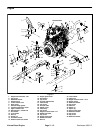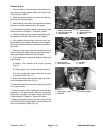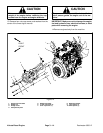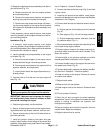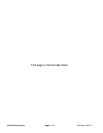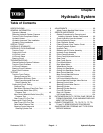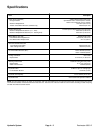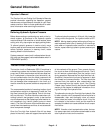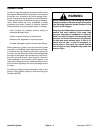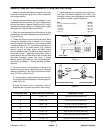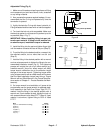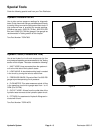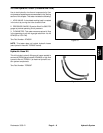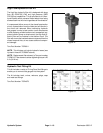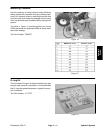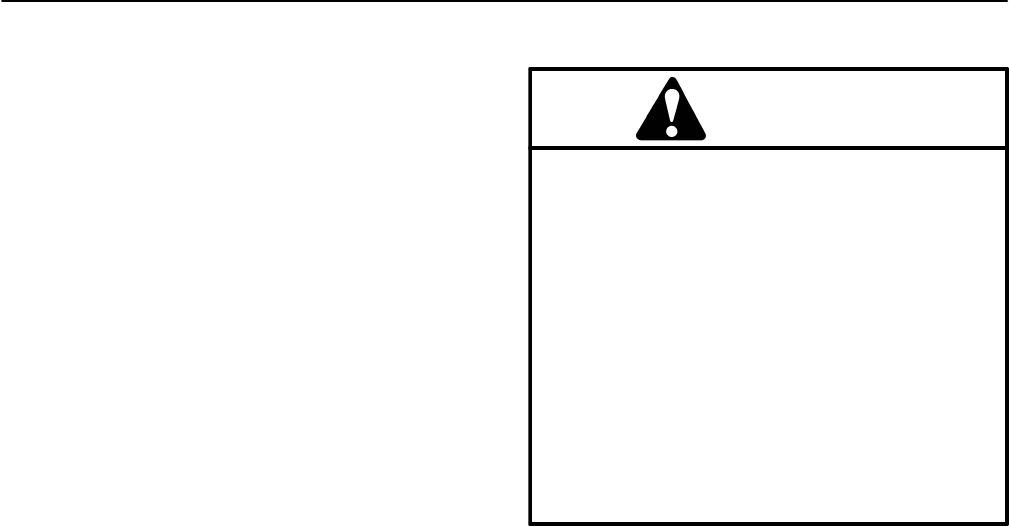
Reelmaster 3550−DHydraulic System Page 4 − 4
Hydraulic Hoses
Hydraulic hoses are subject to extreme conditions such
as pressure differentials during operation and exposure
to weather, sun, chemicals, very warm storage condi-
tions or mishandling during operation and maintenance.
These conditions can cause hose damage and deterio-
ration. Some hoses are more susceptible to these
conditions than others. Inspect all machine hydraulic
hoses frequently for signs of deterioration or damage:
Hard, cracked, cut, abraded, charred, leaking or
otherwise damaged hose.
Kinked, crushed, flattened or twisted hose.
Blistered, soft, degraded or loose hose cover.
Cracked, damaged or badly corroded hose fittings.
When replacing a hydraulic hose, be sure that the hose
is straight (not twisted) before tightening the fittings.
This can be done by observing the imprint (layline) on
the hose. Use two wrenches; hold the hose straight with
one wrench and tighten the hose swivel nut onto the fit-
ting with the other wrench (See Hydraulic Hose and
Tube Installation in this section in this chapter). If the
hose has an elbow at one end, tighten the swivel nut on
that end before tightening the nut on the straight end of
the hose.
For additional hydraulic hose information, refer to Toro
Service Training Book, Hydraulic Hose Servicing (Part
Number 94813SL).
WARNING
Before disconnecting or performing any work on
hydraulic system, relieve all pressure in system
(see Relieving Hydraulic System Pressure in this
section of this chapter).
Keep body and hands away from pin hole leaks o
r
nozzles that eject hydraulic fluid under high
pressure. Use paper or cardboard, not hands, to
search for leaks. Hydraulic fluid escaping unde
r
pressure can have sufficient force to penetrate
the skin and cause serious injury. If fluid is in
-
jected into the skin, it must be surgically re
-
moved within a few hours by a doctor familia
r
with this type of injury. Gangrene may result from
such an injury.



